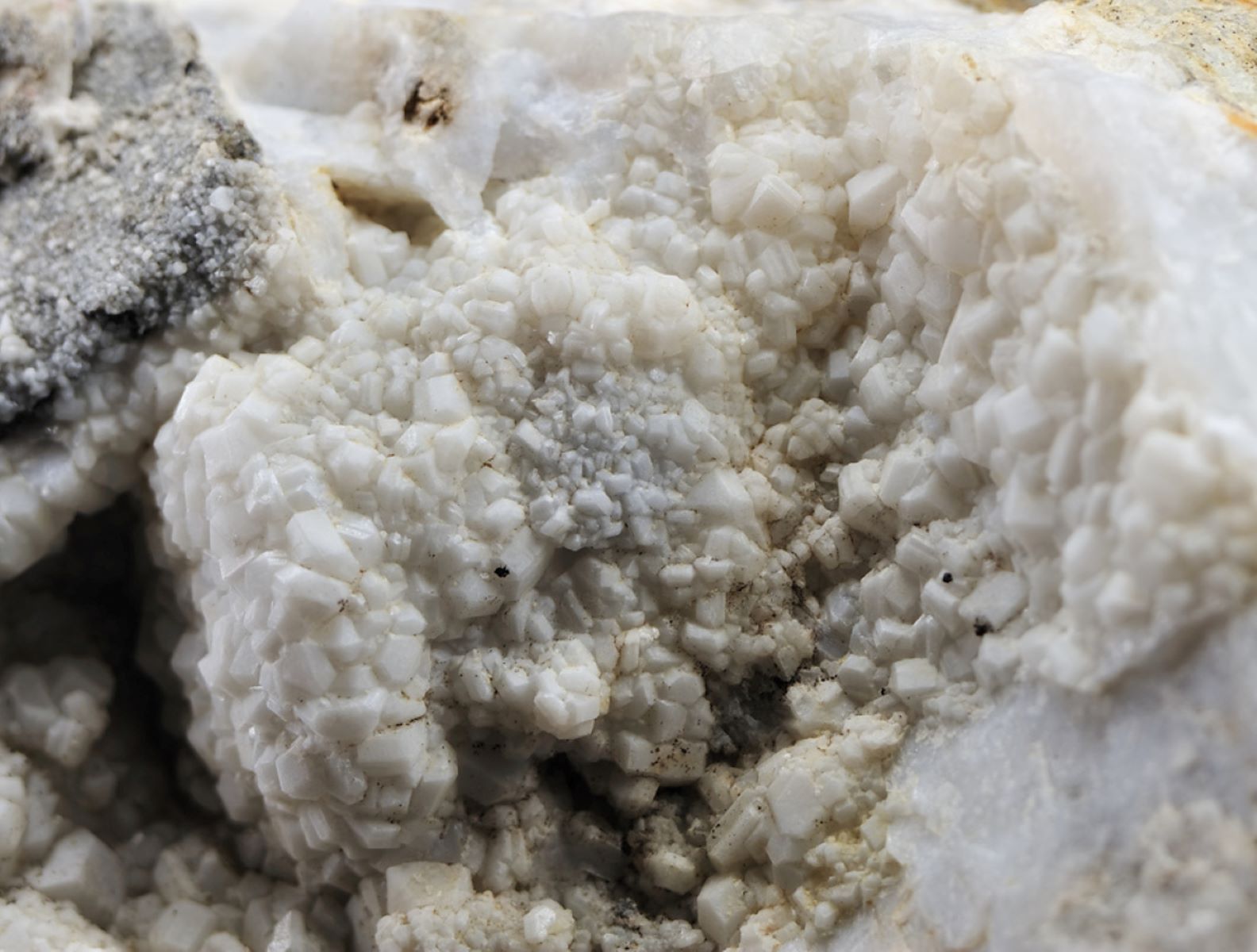
Chibaite is a fascinating mineral that many people might not know about. Found primarily in Japan, this rare gem has unique properties that make it stand out. Chibaite is a type of silica mineral, similar to quartz, but with a twist. It often forms in volcanic rocks and can be quite beautiful when polished. What makes Chibaite special is its ability to trap tiny bubbles of gas and liquid inside, creating stunning visual effects. This mineral is not just a pretty face; it also has scientific significance. Researchers study Chibaite to understand more about volcanic activity and the Earth's history. Ready to learn more about this intriguing mineral? Let's dive into 30 amazing facts about Chibaite!
Key Takeaways:
- Chibaite is a rare silica mineral with unique properties, such as containing water molecules and being thermally stable. It can be found in various locations worldwide, including volcanic regions and areas with geothermal activity.
- Chibaite, a mineral discovered in Japan, has captured the interest of geologists. It has a glassy luster, unique crystal structure, and can be found in rocks, geodes, and even meteorites.
What is Chibaite?
Chibaite is a rare mineral that has captured the interest of geologists and mineral enthusiasts alike. Found in specific locations, it has unique properties that make it stand out. Let's delve into some fascinating facts about this intriguing mineral.
-
Chibaite is a silica mineral. It primarily consists of silicon dioxide, similar to quartz.
-
Discovered in Chiba Prefecture, Japan. This is where it gets its name.
-
It was first identified in 1987. Relatively recent in the world of mineralogy.
-
Chibaite forms in hydrothermal environments. These are areas where hot water circulates through rocks.
-
It often appears in nodules. These are small, rounded lumps found within rocks.
-
The mineral is typically colorless or white. This makes it visually similar to other silica minerals.
-
Chibaite has a glassy luster. It reflects light in a way that gives it a shiny appearance.
-
It has a hardness of 7 on the Mohs scale. This means it is quite hard, similar to quartz.
-
The mineral has a conchoidal fracture. When broken, it forms smooth, curved surfaces.
-
Chibaite is often found in association with zeolites. These are another group of minerals formed in similar environments.
Unique Properties of Chibaite
Chibaite isn't just another silica mineral. It has some unique properties that set it apart from others in its category.
-
It contains water molecules within its structure. This is unusual for silica minerals.
-
The water content can be as high as 10%. This significantly affects its physical properties.
-
Chibaite is thermally stable. It can withstand high temperatures without breaking down.
-
It has a low density compared to other silica minerals. This is due to the water content.
-
The mineral is chemically inert. It doesn't react easily with other substances.
-
Chibaite can be used as an indicator mineral. Its presence can signal specific geological conditions.
-
It has a unique crystal structure. This structure is different from other silica minerals like quartz or opal.
-
The mineral can be synthesized in laboratories. This allows scientists to study its properties in detail.
-
Chibaite is often studied for its potential industrial applications. Its unique properties make it useful in various fields.
-
It has been found in meteorites. This suggests it can form in extraterrestrial environments.
Where to Find Chibaite
Chibaite is not just limited to Japan. It has been found in various locations around the world, each offering unique insights into its formation.
-
Besides Japan, it has been found in Italy. Specifically, in the volcanic regions.
-
It is also present in Iceland. Another volcanic hotspot.
-
Chibaite has been discovered in New Zealand. Known for its geothermal activity.
-
The mineral is found in Russia. Particularly in areas with hydrothermal activity.
-
It has been identified in the United States. Mainly in the western states with volcanic history.
-
Chibaite is often found in geodes. These are hollow rocks lined with crystals.
-
It can also be found in veins within rocks. These are cracks filled with mineral deposits.
-
The mineral is sometimes found in sedimentary rocks. Formed from the accumulation of mineral particles.
-
Chibaite is often associated with volcanic glass. This is another form of silica.
-
It is sometimes found in fossilized wood. This occurs when silica replaces the organic material over time.
The Final Word on Chibaite
Chibaite, a rare and fascinating mineral, holds a unique place in the world of geology. Found primarily in Japan, this mineral's distinct properties and formation process make it a subject of great interest. Its crystal structure, composed of silicon and oxygen, sets it apart from more common minerals. Chibaite's rarity and the specific conditions required for its formation contribute to its allure among collectors and scientists alike.
Understanding Chibaite not only enriches our knowledge of Earth's geological diversity but also highlights the intricate processes that shape our planet. Whether you're a seasoned geologist or just someone curious about the natural world, Chibaite offers a glimpse into the complexity and beauty of mineral formation. Keep exploring and learning about such unique minerals, as they reveal the hidden wonders of our planet.
Frequently Asked Questions
Was this page helpful?
Our commitment to delivering trustworthy and engaging content is at the heart of what we do. Each fact on our site is contributed by real users like you, bringing a wealth of diverse insights and information. To ensure the highest standards of accuracy and reliability, our dedicated editors meticulously review each submission. This process guarantees that the facts we share are not only fascinating but also credible. Trust in our commitment to quality and authenticity as you explore and learn with us.


